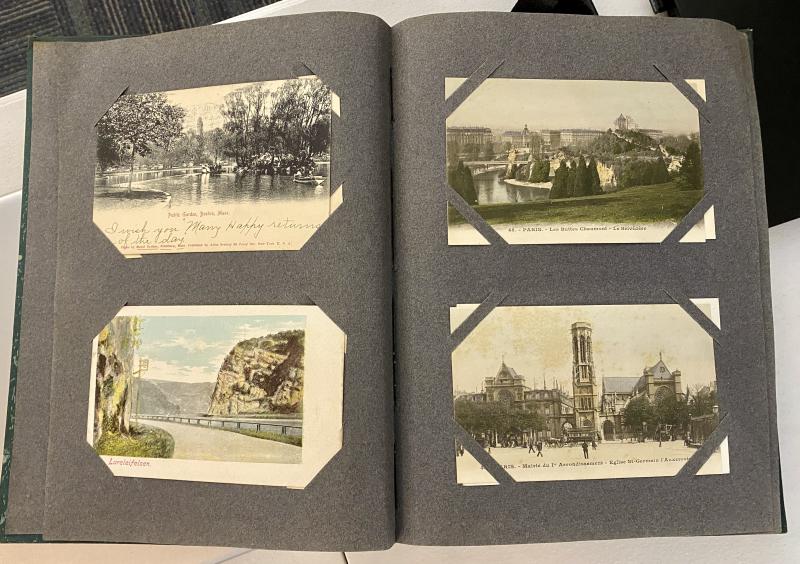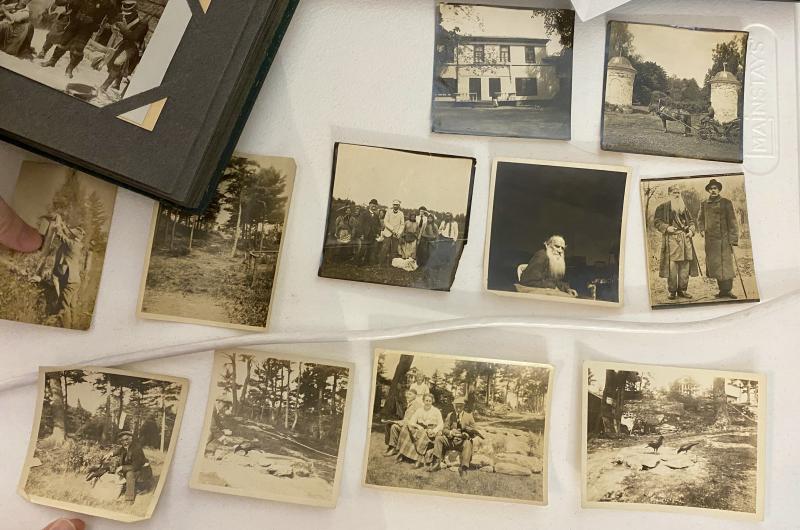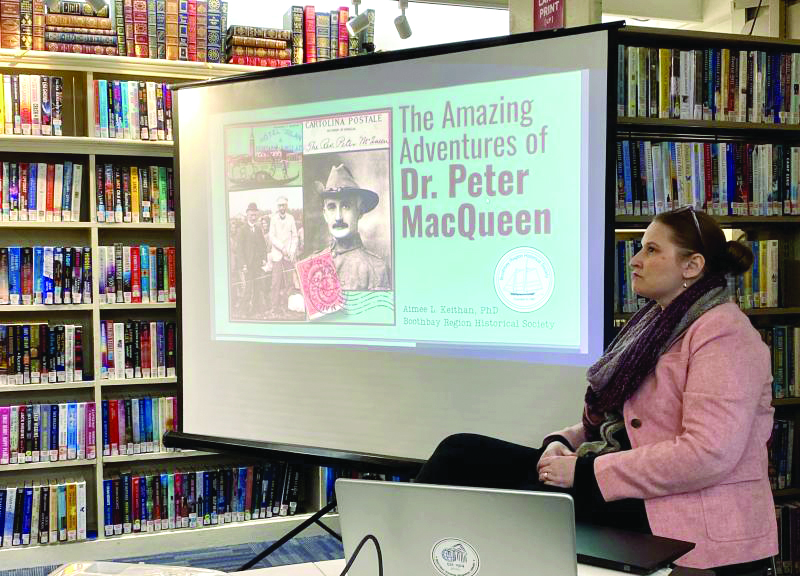Boothbay Region Historical Society holds lecture on notable resident
Peter McHarg MacQueen (1863-1924) was well-known in his time. He was a pastor, a special agent and a globe-trotting journalist. He climbed mountains, befriended presidents, and spent extended time as a guest in the home of acclaimed Russian author Leo Tolstoy. But not a lot of people know he was also a long-term summer resident of the Boothbay Region, who eventually setted permanently in the area. His body now rests in Boothbay’s Oceanview Cemetery.
On Oct. 17, during a lecture at Boothbay Harbor Memorial Library (BHML), Aimée Keithan, executive director of Boothbay Region Historical Society, took audience members through a brief snapshot of MacQueen’s life. The lecture covered MacQueen’s adventures, and the circumstances that inspired Keithan to research him.
It started with a postcard album donated by someone whose family used to rent MacQueen’s old house on Murray Hill in East Boothbay in the 1950s. Most of the postcards are blank, while others have dates and brief messages. “Come right out here, you farmer!” reads one from 1904, the St. Louis’ World Fair printed on its front. And tucked in the album's pages were photos: MacQueen with his friends, the Maine crows he loves to feed, and a casual snapshot of Leo Tolstoy.
“Most of the postcards are ones that he, himself, chose to keep because they reminded him of his travels. And if they were out of context, just a pile of postcards, they wouldn't mean anything, but with the photographs, this is a life. This is a story,” Keithan explained.
Keithan and other trustees began to work backward, cross-referencing MacQueen's known whereabouts from his published articles and other information to contextualize the postcards. Keithan presented the audience with several of the postcards, grouping them by common themes: religious buildings, mountains, and Tolstoy and his home.
MacQueen was born in Scotland, arriving in America at 18 and becoming a naturalized citizen not long after. Keithan explained, MacQueen raised money to leave his home on the condition he become a clergyman; religion remained an important factor throughout his life. MacQueen spent a brief stint as a pastor at Congregational Chuch in Boothbay Harbor. Keithan also noted that MacQueen’s postcards depict not only Christian religious sites, but mosques as well, suggesting an interest in other faith practices.
However, MacQueen is best known for his mountain-climbing career. He was one of the first Americans to scale Africa’s Mt. Kilimanjaro. He didn’t make it to the top, but set a record for the highest an American had gone at the time. He spent extensive time in Africa, living amongst the Kenyan Taveta people, and his book In Wildest Africa (1909) is still used by mountain climbers today, according to Keithan. The third postcard section, and the accompanying photographs, of Tolstoy and his family, remain the biggest mystery for Keithan: It is evident that MacQueen spent extensive time as a guest in the Tolstoy household, but Keithan is unsure how the pair came together, or what writings MacQueen produced during his stay.
The investigation is ongoing as the Historical Society plans to continue to research more deeply into MacQueen, to make this information available to other historians — and bring more attention to MacQueen as a resident.
“I really hope this ends up being a remembrance that this man was so connected to the community,” said Keithan.












































